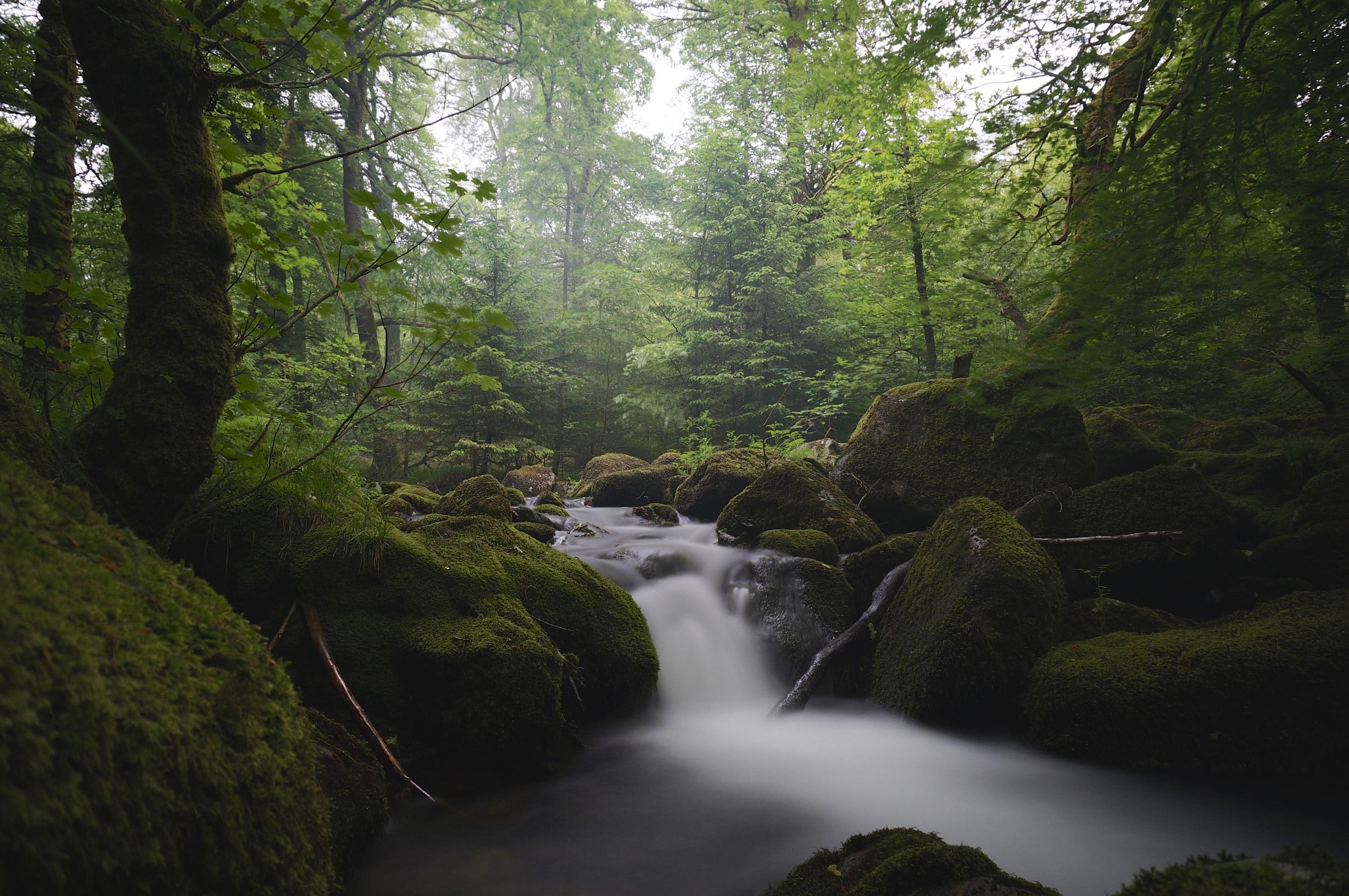DARTMOOR NATIONAL FOREST | DEVON, ENGLAND by Norma Poindexter
As the moody mists move across the wild, open moors on the dark, windy evening, you can hear the
piercing, mysterious howling of the hounds in Dartmoor, known for its myths and legends. The haunt of
pixies, a headless horseman, a mysterious pack of “spectral hounds”, the devil’s visitation, and a large,
black dog are but a few of the widespread, ancient legends and ghost stories that sweep the upland area
in southern Devon, England. Known for its dramatic lore surrounding the “Tors”, striking outcrops of
rounded, boulderlike, granite formations on its hills, Dartmoor National Park possesses prehistoric
remains that date back to the late Neolithic and Bronze Age, 10,000-3,500 BC. Mystifying enigmas and
legends swirl around Dartmoor’s prehistoric standing stones, Bronze Age stone circles, Neolithic tombs,
“kistvaens” or flat-stone slab tombs, “cairns” or memorial mounds of rough stones, abandoned
medieval farmhouses, and Bronze Age stone rows with huts. Bewildering and amazing at the same time.
Murky bogs on Dartmoor, like Fox Tor Mires, famously provided inspiration for Great Grimpen Mire in Conan Doyle’s novel The Hound of the Baskervilles, the best known of the Sherlock Holmes novels by Arthur Conan Doyle in 1901. Based on a true story about the cursed Squire Richard Cabell of Brook Hall in the parish of Buckfastleigh, Sherlock Holmes solves a murder case that exploited one man’s fear of a family legend to bring about his premature death. The sight of giant, hellish, black hounds painted with ghostly phosphorous for demonic, supernatural features in the night brought to life Sir Charles’s dark fears. Cabell’s tomb survives in the town of Buckfastleigh.
Just like ancient times, dramatic storms and strong winds still carve the intriguing, craggy Dartmoor
landscape filled with torrent streams like the Dart, Taw and Teign, internationally-famous blanket bogs,
roaming native ponies, lush forests, extensive wetlands, and dramatic Tors. Wistman’s Wood, one of
the oldest oak woods surviving the earliest, Neolithic, woodland clearances, still hosts exceptional
mosses, liverworts, and lichen that grow on the exposed surfaces of the granite Tors. In beautiful,
muted shades of green, gold, and red, Dartmoor Moss creates a bouncing blanket across the land, and in
the bogs, soaks up water and then delivers clean, naturally-filtered supplies in times of drought.
With 450 miles of gorgeous paths to walk, cycle, or ride horses, Dartmoor’s stunning, breathtaking views across vast, open moorlands and deep river valleys dramatically deliver to you: rich history and rare wildlife; mysteriously intriguing tales and lore; prolific, acidic-soiled farmlands; and quiet places to contemplate all of them. Caution: quiet places except when the frequent, spooky mists descend very quickly, reducing visibility to the point that you can get easily lost, strangely identical to the plots of the mysteries, myths and legends.


